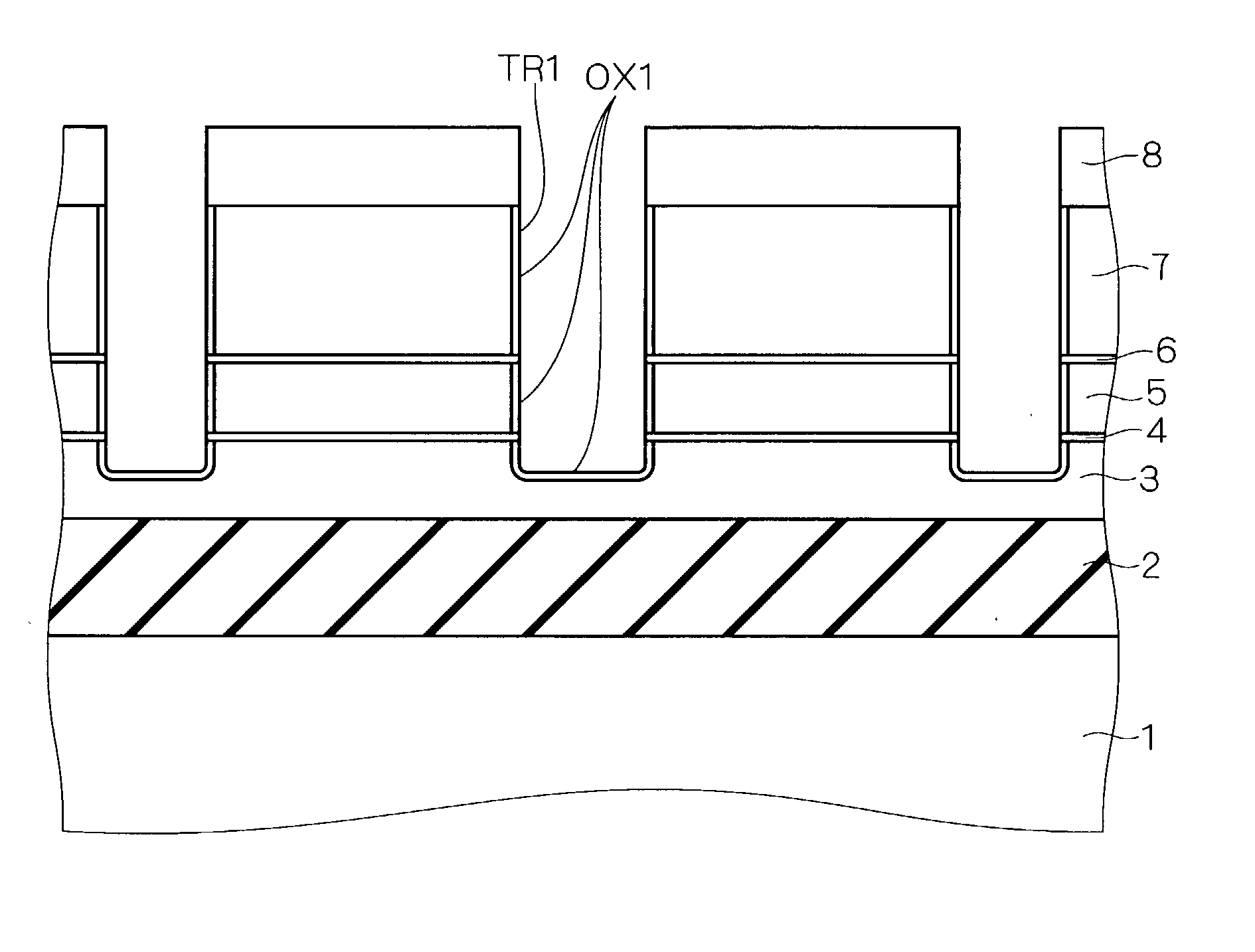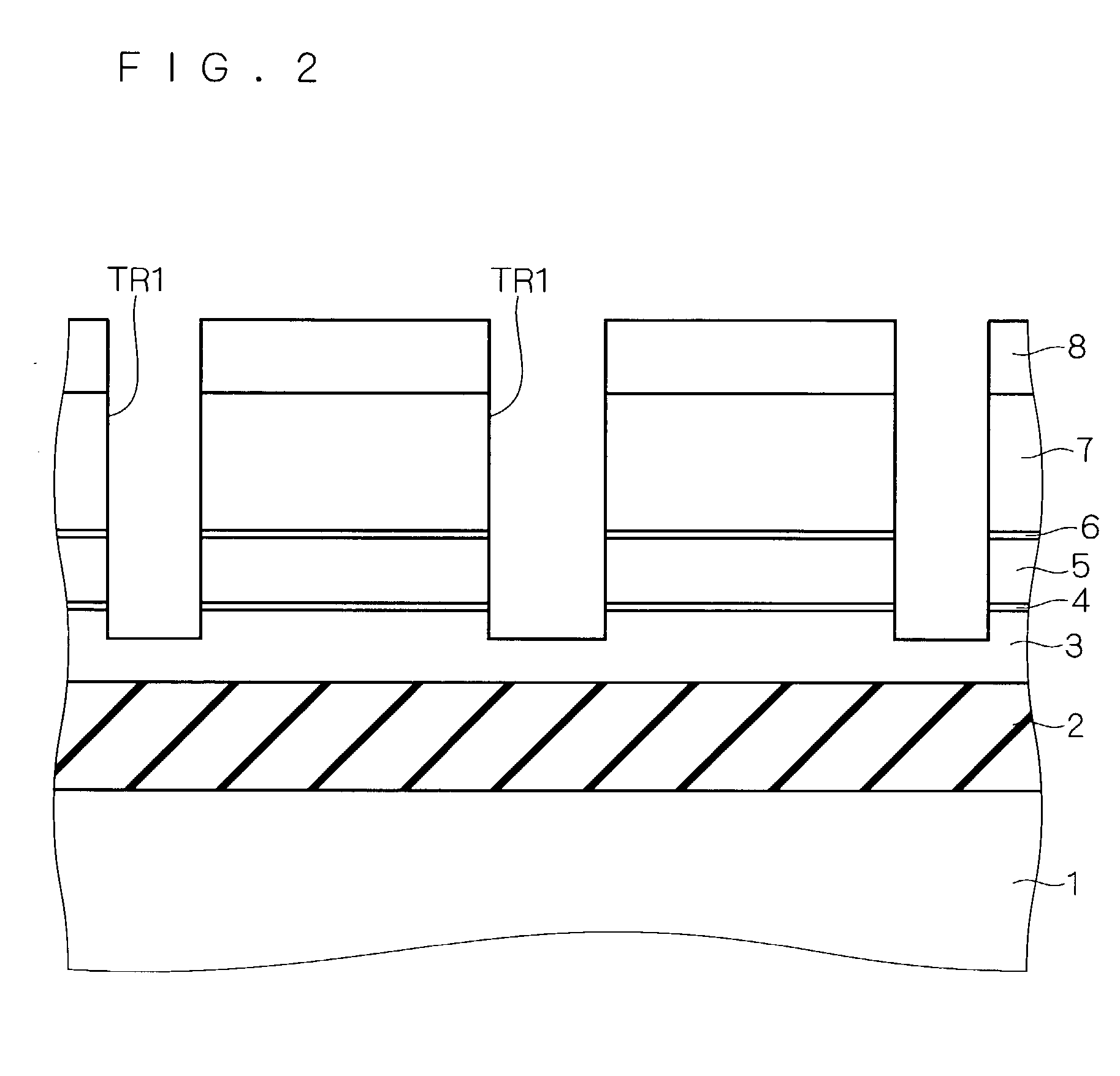Method of manufacturing semicontor device having trench isolation
a technology of trench isolation and semiconductor devices, which is applied in the direction of semiconductor devices, semiconductor/solid-state device testing/measurement, electrical equipment, etc., can solve the problems of deterioration of operation breakdown voltage, kinks, and heat treatment after implanting impurities
- Summary
- Abstract
- Description
- Claims
- Application Information
AI Technical Summary
Problems solved by technology
Method used
Image
Examples
fourth embodiment
[0258] D. Fourth Embodiment
[0259] In the semiconductor device manufacturing method described by referring to FIGS. 1 to 20, at the time of forming a partial isolation oxide film, a partial trench is formed and, after that, an internal-wall oxide film is formed in the partial trench. Also in formation of a full isolation oxide film and a combined isolation oxide film, a partial trench is formed once, an internal-wall oxide film is formed and, after that, a desired full trench is formed, thereby obtaining the following effects.
[0260] D-1. Manufacturing Method
[0261] First, by referring to FIGS. 47 to 51 as cross sections sequentially showing the manufacturing process, a semiconductor device manufacturing method of a fourth embodiment according to the invention will be described.
[0262] FIG. 47 is a diagram corresponding to the process described by referring to FIG. 16 and shows a state where the internal wall of trench TR2 is oxidized to thereby form internal-wall oxide film OX1.
[0263] ...
fifth embodiment
[0279] E. Fifth Embodiment
[0280] E-1. Device Configuration
[0281] Although attention is paid to the above-descried partial trench isolation (PTI) structure as a structure capable of realizing the body fixation of fixing the potential of the channel formation region via the well region remaining under the partial isolation oxide film, it is not always necessary to fix all of the regions of the semiconductor device. There is also a region for which a floating structure is preferably employed by using the features of the SOI device.
[0282] For example, there may be a case that, in a system LSI, a random logic part has the PTI structure in which the body fixation is performed, and an SRAM part has a floating structure as the FTI structure (full trench isolation structure).
[0283] As a fifth embodiment according to the invention, a semiconductor device in which the random logic part has the PTI structure and the SRAM part has the FTI structure will be described hereinbelow.
[0284] FIG. 52 is...
sixth embodiment
[0318] F. Sixth Embodiment
[0319] F-1. Device Configuration
[0320] As described in the first to fifth embodiments, in the case of electrically isolating the MOS transistors by using the part isolation oxide film, since the SOI layer exists under the partial isolation oxide film between MOS transistors, if impurities are introduced to the SOI layer and electric resistance is lowered, there is the possibility that isolating power deteriorates.
[0321] For example, as shown in FIG. 63, in the configuration where two MOS transistors are disposed adjacent to each other, the partial isolation oxide film is formed in a region G between active regions AR of the transistors. Consequently, if impurities for forming the source / drain layer are introduced into the SOI layer in the region, electric resistance deteriorates.
[0322] After designing a region to which an impurity is to be implanted by a CAD or the like, a negative mask in which the other region is a light shielding portion is generated. A ...
PUM
 Login to View More
Login to View More Abstract
Description
Claims
Application Information
 Login to View More
Login to View More - R&D
- Intellectual Property
- Life Sciences
- Materials
- Tech Scout
- Unparalleled Data Quality
- Higher Quality Content
- 60% Fewer Hallucinations
Browse by: Latest US Patents, China's latest patents, Technical Efficacy Thesaurus, Application Domain, Technology Topic, Popular Technical Reports.
© 2025 PatSnap. All rights reserved.Legal|Privacy policy|Modern Slavery Act Transparency Statement|Sitemap|About US| Contact US: help@patsnap.com



